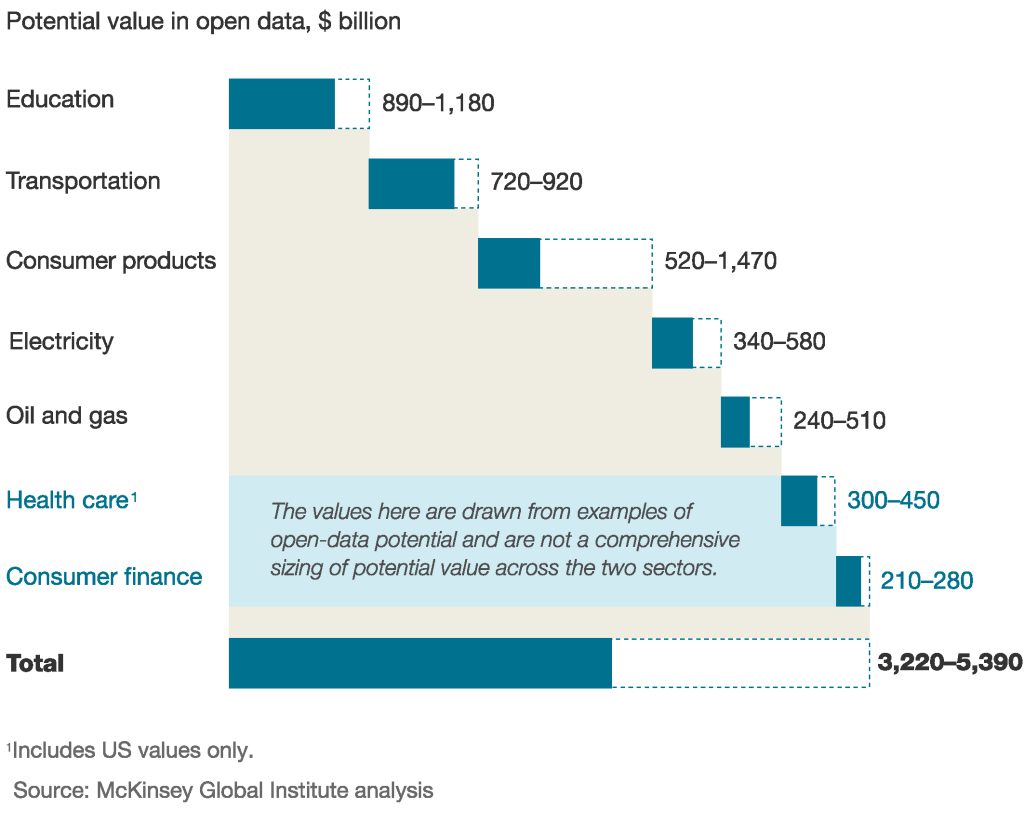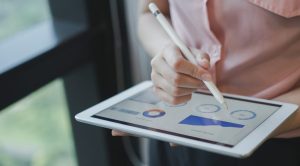Open data can improve our approach to business and insights – if we let it.
The phrase “open data” has been floating around for years now, so what exactly is it? Global Database put it the most simply: data that has been made freely available for anyone to access and reuse.
Historically, open data primarily referred to governments releasing their data and being more transparent, but we have recently seen a shift to businesses using open data. That’s for a good reason. According to a McKinsey report, open-source data could be worth $3 to $5 trillion annually. McKinsey also projected that by 2030, data-enabled applications of artificial intelligence (AI) could generate $13 trillion in new global economic activity.

Clearly, there is money to be made from open data.
How to Use Open Data for Financial Gain & More
DataScience Ltd points to Amazon as one strong example of how open data proves financially beneficial. By opening what was formerly proprietary data, Amazon increased sales “by exposing product information to the largest possible number of potential customers.” Other large organizations, such as Google, Asos, and Nike, made more data open to their customers and improved their connections with them. In doing so, they demonstrated their commitments to transparency and sustainability.
The benefits extend well beyond the bottom line.
Open data emerged from the idea of “open science,” which was born out of the rise of online journals in the 1990s. This shift was spurred by the fact that much research is funded by the public’s tax dollars, and thus the public should have open access to its results rather than having them hidden behind paywalls. It also took into account what many would argue was the original intent of scientific research – to support transparency and collaboration.
Why We Need Open Data: Transparency & Collaboration
Not only does open data improve research by increasing the reproducibility of results, generating larger sample sizes, and maximizing taxpayer funding in cases of publicly funded projects, it creates more opportunities for innovation and collaboration.
 As organizations share their data, others can take it and use it in novel ways. They then find better solutions to common challenges by looking at a wide breadth of information that is more representative of the people facing them. Synergies between what may have appeared to be unrelated organizations become evident, enabling new partnerships to grow and improve all parties.
As organizations share their data, others can take it and use it in novel ways. They then find better solutions to common challenges by looking at a wide breadth of information that is more representative of the people facing them. Synergies between what may have appeared to be unrelated organizations become evident, enabling new partnerships to grow and improve all parties.
The Conversation cites Future City Glasgow as an example of how open data initiatives in the public sector can work to enhance the public good, as it uses “open data to create predictive systems that provide the information citizens need to make better day-to-day decisions.” This same logic can be applied to business, as they use open data to make better decisions.
Challenges to Open Data Include Privacy, Publishing, and Proprietary Information
There is no doubt, however, there are obstacles that open data must overcome. First, how do we make it appealing and beneficial for researchers to release their data? The phrase “publish or perish” is one many public and academic researchers are forced to live by, as the production of data in and of itself is not rewarded or recognized. The fear of getting scooped or having a career trajectory stopped in its tracks because one isn’t publishing enough is real, and we must find ways to mitigate this in our public research.
Second, there are genuine concerns about protecting the privacy of those whose data is being shared. This is a challenge we are only just beginning to address at the scale necessary. We will require companies to step up and find innovative measures to protect privacy while governing bodies catch up to this shift.
Finally, many businesses don’t see the benefit of sharing proprietary information, fearing that it will make them less competitive. Businesses must begin to have more discussions about the benefits not just to society, but to business outcomes by sharing open data regularly.
Up to
|
Internally, many businesses face similar opportunities and challenges when it comes to making their data accessible. The response has been a shift to data democratization – making data available to everyone within the organization rather than holding it all within the research or insights function.
According to Forrester, up to 73 percent of the data within a company goes unused. This is a tremendous amount of insight, and subsequently potential dollars, left on the table. Organizations such as Mars Wrigley and RBC Royal Bank shifted their corporate cultures to embed data-driven thinking into every business function and, in doing so, democratized their data internally. |
Simplify Sharing to Increase Likelihood of Open Data Adoption
The burden of these changes cannot be placed on individuals, however. Organizational infrastructure must support them, including technology that allows the sharing of data to be a seamless process rather than a cumbersome obstacle. The simpler it is to share data, the more likely it will happen.
As this shift happens more and more within organizations, it must also begin to happen externally. Elinor Orstrom, winner of a Nobel Prize for Economics in 2009, believed open data was a new kind of “public good.” Huston, Edge, and Bernier explain the “thinking was that unlike other types of public good, the use of Open Data does not deplete the common stock, but potentially enriches it.” When done responsibly and ethically, open data improves outcomes for both large and small businesses, consumers, and the public at large.










 5 Minutes
5 Minutes 












